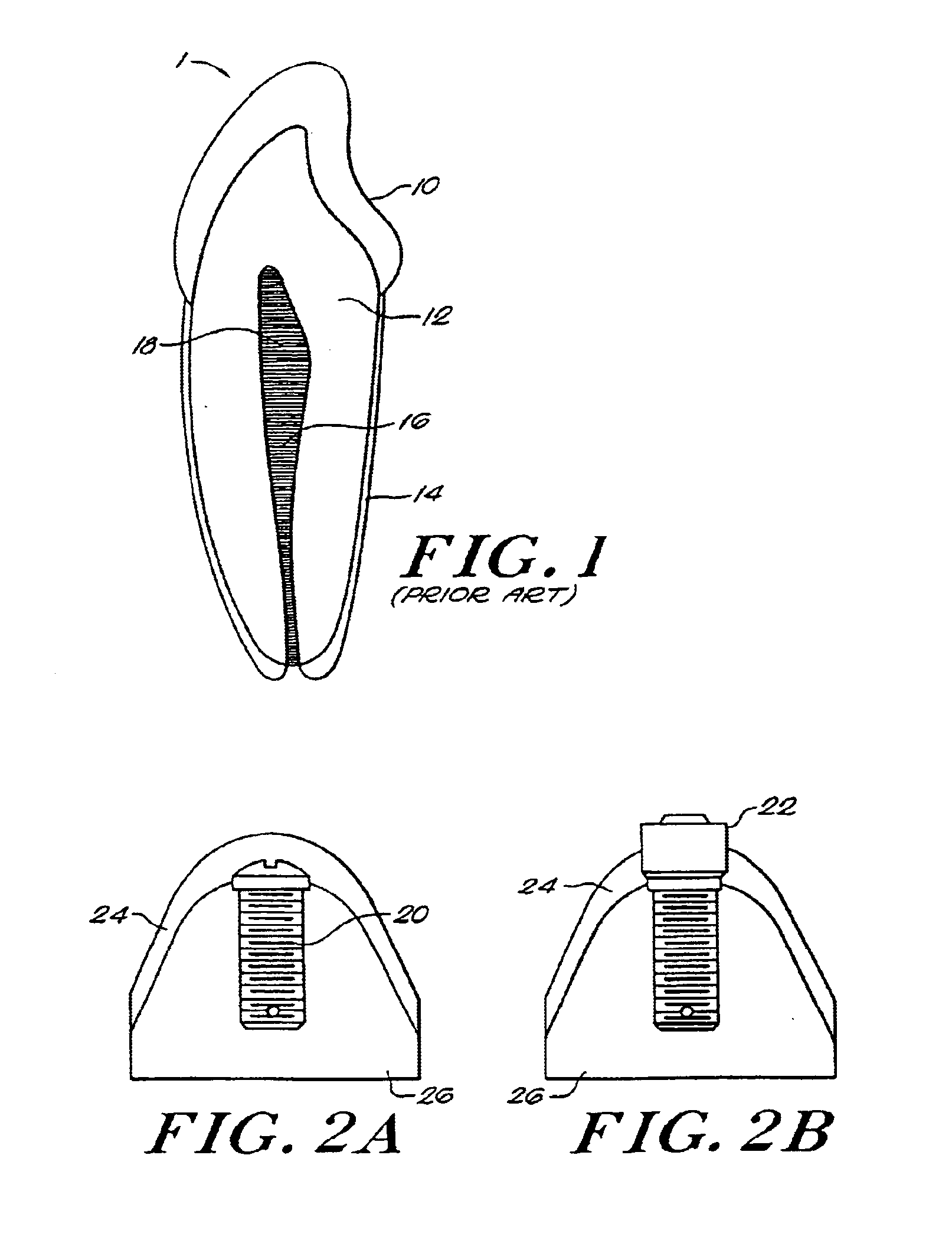Method for fabricating endodontic, orthodontic, and direct restorations having infused ceramic network
- Summary
- Abstract
- Description
- Claims
- Application Information
AI Technical Summary
Benefits of technology
Problems solved by technology
Method used
Image
Examples
Embodiment Construction
[0022]As seen in FIGS. 2a and 2b, implant abutments 22 are screwed or cemented on top of the implant 20 which has been placed through the oral mucosa 24 and into the bone 26. They can take the form of a natural tooth to replace the missing tooth structure or may be only a core and post 40, as shown in FIG. 3, to act as a substructure restorative material which replaces the natural tooth. The implant abutment parts may be directly modified by the dentist to improve the fit and contour of the restoration. Presently, metal and Lexan plastic abutments are difficult to adjust in the clinic. The abutment cannot be easily bonded to by acrylic or composite resin to produce the final or temporary restoration.
[0023]Endodontically treated teeth often require screwed retained crowns 28 or cemented crowns 30 as seen in FIGS. 2c and 2d. These teeth often have no remaining tooth structure above the gum line and require a post to be placed into the root canal and a core to be placed on top of the p...
PUM
| Property | Measurement | Unit |
|---|---|---|
| Hardness | aaaaa | aaaaa |
| Elastic modulus | aaaaa | aaaaa |
| Flexural strength | aaaaa | aaaaa |
Abstract
Description
Claims
Application Information
 Login to View More
Login to View More - R&D
- Intellectual Property
- Life Sciences
- Materials
- Tech Scout
- Unparalleled Data Quality
- Higher Quality Content
- 60% Fewer Hallucinations
Browse by: Latest US Patents, China's latest patents, Technical Efficacy Thesaurus, Application Domain, Technology Topic, Popular Technical Reports.
© 2025 PatSnap. All rights reserved.Legal|Privacy policy|Modern Slavery Act Transparency Statement|Sitemap|About US| Contact US: help@patsnap.com



